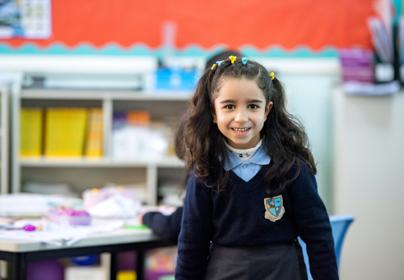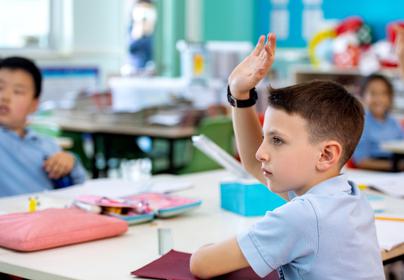At Britannica we are proud to be facilitating the the Curiosity Approach in our Early Years. The Curiosity Approach is an educational philosophy that prioritises children’s natural curiosity. This approach encourages exploration and hands-on experiences, allowing students to engage deeply with their environment and develop critical thinking skills.
Central to the Curiosity Approach is child-led learning, where students pursue topics that interest them. Our classrooms are designed to be flexible and filled with diverse materials that inspire investigation. Play-based learning fosters creativity and problem-solving, while a culture of questioning encourages children to ask "why," "how," and "what if".
This week, Pre-Nursery has continued exploring the story ‘Brown Bear, Brown Bear’. The children enjoyed re-telling the story through song and have been selecting loose parts, natural resources, and small animals to create a miniature world, allowing them to narrate the story in their own words. Additionally, the children have been very creative by using small bear figures to make paint footprints, resulting in beautiful patterns.
It has been a journey to space for our young Nursery explorers where they have delved into the sun, planets, sky, and stars. Inspired by their wonder about the sky, we read “Space Rocket Ride,” which sparked their imaginations. The children then took their space theme outdoors, using large loose parts to build rockets. It was wonderful to see their teamwork and creativity in action as they constructed impressive spacecraft together.
Reception enjoyed ample outdoor time despite the change in weather. The children discovered a toad in the garden, which we kept for the day to observe. This ignited curiosity and discussions on how to treat and respect the natural world. They read "The Leaf Thief," allowing the children to sequence the story and introducing them to storytelling language — an important skill that fosters imagination. They also continued practicing their sounds and have now learned the letters /t/ and /p/. In Maths, we engaged them in various activities to enhance their counting skills, ordinal numbers, and number bonds, while also practicing how to form numbers.
By embracing the Curiosity Approach, we are creating a vibrant learning culture that not only enhances academic skills but also fosters a lifelong love of learning.




